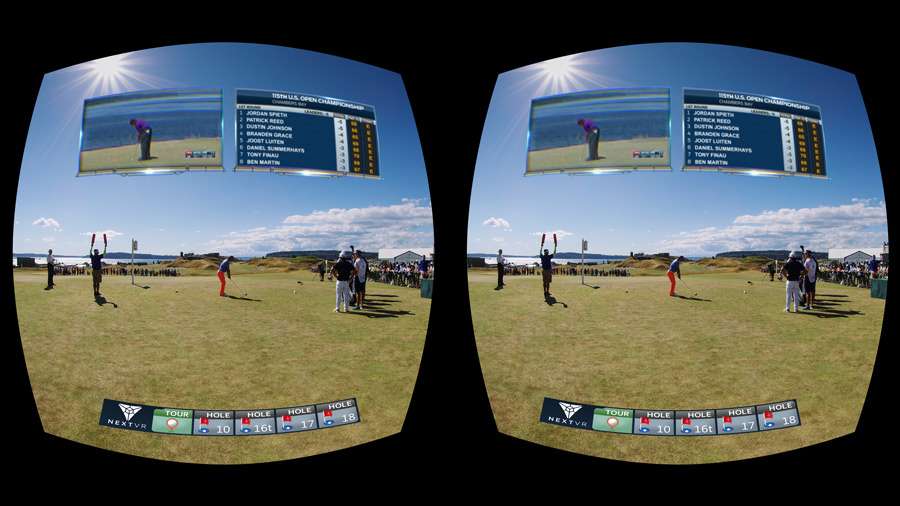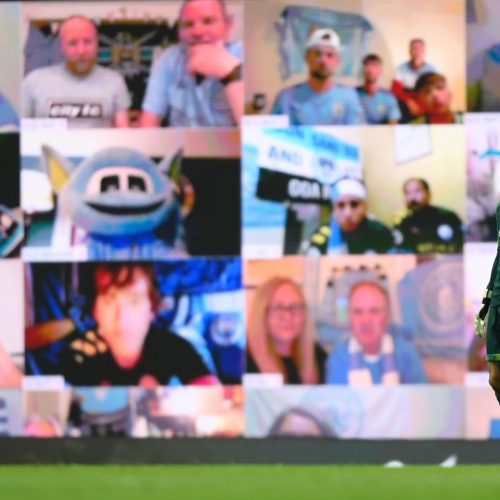VR and AR aren’t new, but new tech can bring them to the mainstream
To have lived at any point over the last few decades is to have lived at a time of bizarrely rapid technological advancement.
We don’t think of it that way, of course, but it’s like growing your hair: you don’t really notice it until it becomes too long.
The change in the computing ability of even the most basic phones over the last five years, for example, has turned video clips and podcasts from things you could only do at a computer to things you can do on your morning commute. It has changed not just our consumption of news, sport and entertainment, but it has transformed how we live our lives, too.
From on-demand entertainment which means we no longer have to be in front of a TV a certain time in order to watch our favourite shows, to the fact that news is now usually brought to us through our newsfeed instead of in a dedicated newspaper.
The question to ask, though, shouldn’t be about how the technologies we’ve adapted en masse have changed the world we live in, but what’s coming next. The answer could be a change not just to our everyday routines, but to reality itself.
Virtual and Augmented Reality could be the next game changers.
We’ve been saying that for a while, of course, but there does appear to be more and more movement towards the mainstream for these two strands of tech. More and more, we’re seeing AR creep its way into the mainstream as more and more apps make use of the technology in our phones which already exist. Meanwhile, VR looks set for some sort of reckoning soon, especially with the heft of Google, Facebook and Samsung all pushing it one way or another.
And yet, hardly any of this is new. As technology transforms our lives with the generation of millions of new apps a year, a host of new platforms for us to use, and even new technology which makes them all possible, the seeds of these ideas are much older than we care to think about at first glance.
In 1962, Morton Heilig built the Sensorama, a box-like machine with a seat where the user would sit in order to immerse herself into a rudimentary virtual reality world with a screen in front – simulating race cars or belly dancers among other things – and would feel bursts of air, smells and sounds to make the experience more real. The idea of a headset to make something like that more portable is hardly much of a leap, then.
But the concept itself goes even further back, to philosophical scepticism and solipsism, indeed to Rene Descartes’ Meditations on First Philosophy, published in Latin in 1641. Planting the idea that it’s barely possible to create a watertight argument for your own existence, let alone what you’d like to call ‘reality’ around you is the first step to creating that barrier between your own consciousness and the real. Nearly 400 years later, putting on a VR headset to transport yourself from your living room to a football stadium on matchday is that thought come to fruition. The pinnacle of VR is that transportation, where the subject feels totally detached from ‘real’ reality and planted so firmly in the virtual one.
That’s not to say that VR is nothing new. Or at least, not any less novel than most of the things we now think of as thoroughly modern creations of the digital world. Almost everything we talk about as being peculiar to our modern life has its roots in much older ideas.
Live streaming – Digital Sport’s first monthly topic – is not new, but has been around in some form since the 1990s, when some rights holders and broadcasters attempted to stream live football. They managed successfully, but rolling it out to millions of people would have been a problem.
Podcasts, we all know, aren’t new but have only burst onto the scene in the last two years. But even then aren’t they simply on-demand radio shows? Even esports – essentially the new kid on the block – are really just a formalising of competitive gaming, something which has been going on for decades. Even 1980s arcade games like Donkey Kong have been played by competitors long before League of Legends was a twinkle in its creator’s eye.
The secret behind all of this is that the technology simply catches up with our ideas and allows them to thrive.
And so for VR and AR to thrive in the same way as OTT streaming, podcasts or esports, we’ll probably find that it’s not the idea that needs to be changed from the early days when it was first thought about. Instead it’s likely that it’ll be the computing power available to the general public, the advent of faster internet, or simply something new in terms of technology that drives an old idea which has spent its life on the periphery into the mainstream.
UPCOMING VR EVENTS
London – http://bit.ly/2mQpGR9
Manchester – http://bit.ly/2DCiwdL
About author
You might also like
Interview: Nielsen Sports’ Spencer Nolan Discusses Covid-19’s Impact on Sport Media Rights and the Commercial Sport Landscape
Digital Sport’s Rupert Pratt and Thomas Smith recently sat down with Nielsen Sports Managing Director for the UK & Ireland, Spencer Nolan, to discuss Covid-19’s impact on sport media rights
Snack Media acquire Facebook’s largest global sports publisher, GIVEMESPORT
Snack Media today announced that its acquisition of GIVEMESPORT will create one of the largest sports publishers in the UK, further strengthening its offering to advertisers, rights holders and independent media owners.
The seven essentials for achieving successful sports branding
By Daniela McVicker When it comes to sports, great branding is a must. Your brand influences how people see your company or team. It helps you to forge connections with










